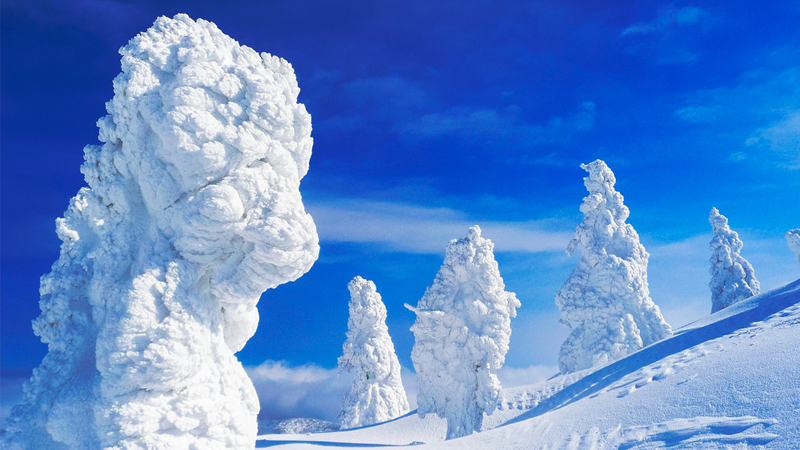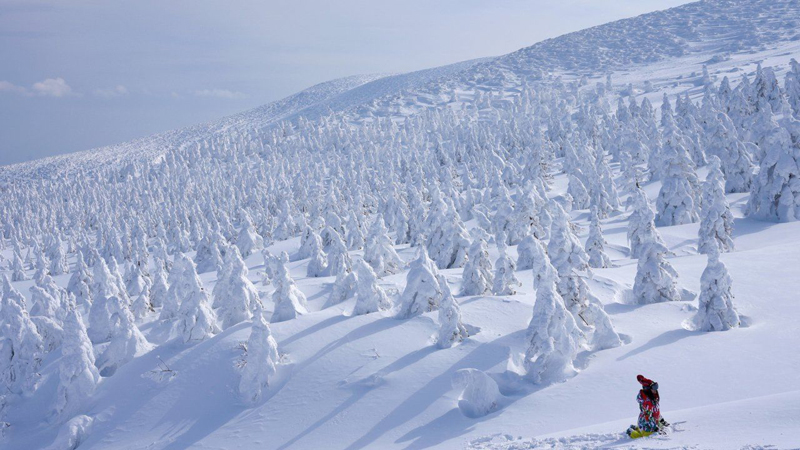 The hugely popular “snow monsters” that inhabit the mountains of Zao are on the brink of extinction and it could spell disaster for the tourism industry in that part of Yamagata Prefecture, in northern Japan.
The hugely popular “snow monsters” that inhabit the mountains of Zao are on the brink of extinction and it could spell disaster for the tourism industry in that part of Yamagata Prefecture, in northern Japan.
For years, “snow monsters” – unique formations that occur when a fine mist of water from clouds over the warmer Sea of Japan coats evergreen trees and then freezes – have been one of the region’s main attractions. Now, however, the coniferous trees have become infested with bark beetles and caterpillars that develop into a moth of the Gelechiidae family.
The 3mm-long palmerworm caterpillar was first identified on trees in the region in 2013, leading to an infestation of beetles on trees that were already damaged. The problem was already sufficiently worrying for regional forest authorities to conduct a study.
That initial investigation determined that 45 of the 60 trees close to the Jizo Sancho Station, on the cable car that brings tourists to the Zao range, had been damaged. By 2018, every one of the trees examined had been damaged and the area affected had spread to lower levels of the mountain.
The insects have killed the trees, meaning they have lost their foliage and the snow is no longer able to accumulate on their branches. Dead limbs often snap off at the trunk under the weight of any snow that gathers, meaning the curious snow shapes known as “snow monsters” can no longer form.

“If a solution cannot be found, it is going to be a very serious problem because the snow monsters are such a draw,” she said. “We get a lot of people coming here to ski, but more and more of our visitors – especially those from China, Taiwan, Thailand, Malaysia and Singapore – don’t come to ski or do other winter sports; they come to see the snow monsters.”
The prefectural government is working with local forestry officials and research institutes in an effort to solve the problem.
One initiative has been to start growing saplings at lower altitudes before transplanting them to areas higher up the mountain, where the trees have been damaged, although officials admit that the climate at higher elevations is harsh and that steps need to be taken to eliminate the insects that have killed the other trees.
Published in Daily Times, January 9th 2019.